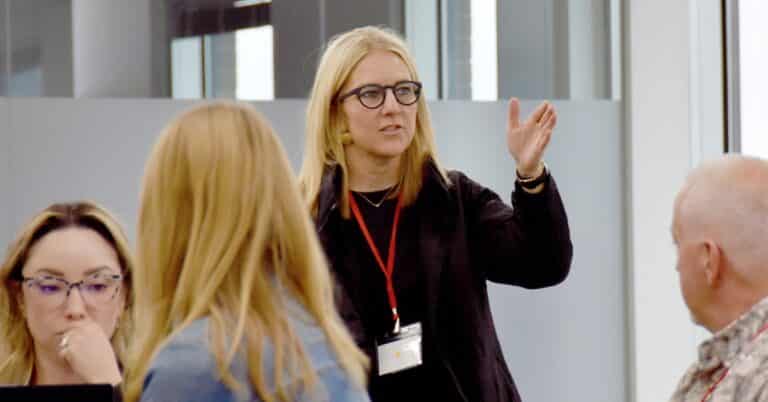This resource was re-published with updates on October 16, 2025.
Creating a vibrant student-centered school culture doesn’t happen by chance – it requires intentional systems that build the capacity of learners and promote independence.
One of the most effective tools for achieving this is the use of standard operating procedures (SOPs). SOPs provide the structure needed to cultivate student agency, foster peer collaboration and build a culture of shared accountability and belonging.
Positive school culture
To sustain a thriving learning environment, schools should focus on three foundational elements:
- Student-centered learning
- Learner agency
- Peer support systems
These support students to answer the critical question: “What am I supposed to do now?” Without clear procedures, students may become overly dependent on adults for direction. Worse, well-intentioned adults often jump in to offer solutions, which means students don’t have the opportunity to engage in active problem-solving.
Below is an excerpt of Heather Townley, an Ohio personalized learning specialist, providing an example of an SOP in action for a webinar with Project Lead the Way and EducationWeek.
How SOPs support student agency
SOPs are rules, are co-created systems that guide behavior, support the community agreements that are in place and build decision-making. When students are involved in designing these procedures, they take ownership of their learning environment.
At Highland Academy in Anchorage, Alaska, one of the first competency-based secondary schools in the U.S. and where I used to be an administrator, a real-world example highlighted the power of SOPs. A recurring issue with the boys’ bathroom led to a temporary closure and adult supervision. While well-intentioned, this top-down solution fell short in terms of collaboration.
The turning point came when students were invited to lead the solution. They organized a student summit, rewrote the bathroom SOP and engaged in peer discussions. The result? The issue was resolved permanently, and the school culture grew stronger.
Why SOPs matter more than you think
Some may argue that the time spent developing SOPs detracts from instruction. I disagree. These procedures lay the groundwork for a more efficient, collaborative and student-led environment. When students understand and follow standard operating procedures (SOPs), they gain confidence and feel a stronger sense of belonging. This reduces the likelihood that they’ll push back against the school culture, as their needs are more likely to be acknowledged and met.
At both the classroom and school levels, SOPs should:
- Be co-created with students
- Be consistently modeled and reinforced
- Encourage students to find answers independently and in shared collaboration with their peers
If a student asks a question that a SOP can answer, try pointing them to the procedure instead of providing the solution. This small shift builds agency and reinforces the culture of student ownership.
If students frequently rely on adults for guidance in a specific area, it may be a sign that a new SOP is needed. Effective SOPs reduce adult dependency and promote equitable leadership across the student body.
Standard operating procedures are not just administrative tools. They are the backbone of a student-driven school culture. By involving students in the creation and implementation of SOPs, educators can foster agency, shared accountability and a stronger sense of community.
Downloadable strategies for getting started on SOPs
Structure can be empowering when it’s built with learners, not just for them. In personalized, competency-based classrooms, Standard Operating Procedures (SOPs) provide clarity and consistency while giving students ownership of their learning. Subscribe to our newsletter to download the strategies to explore ready-to-use ideas for designing learner-centered SOPs that support every student’s success.






